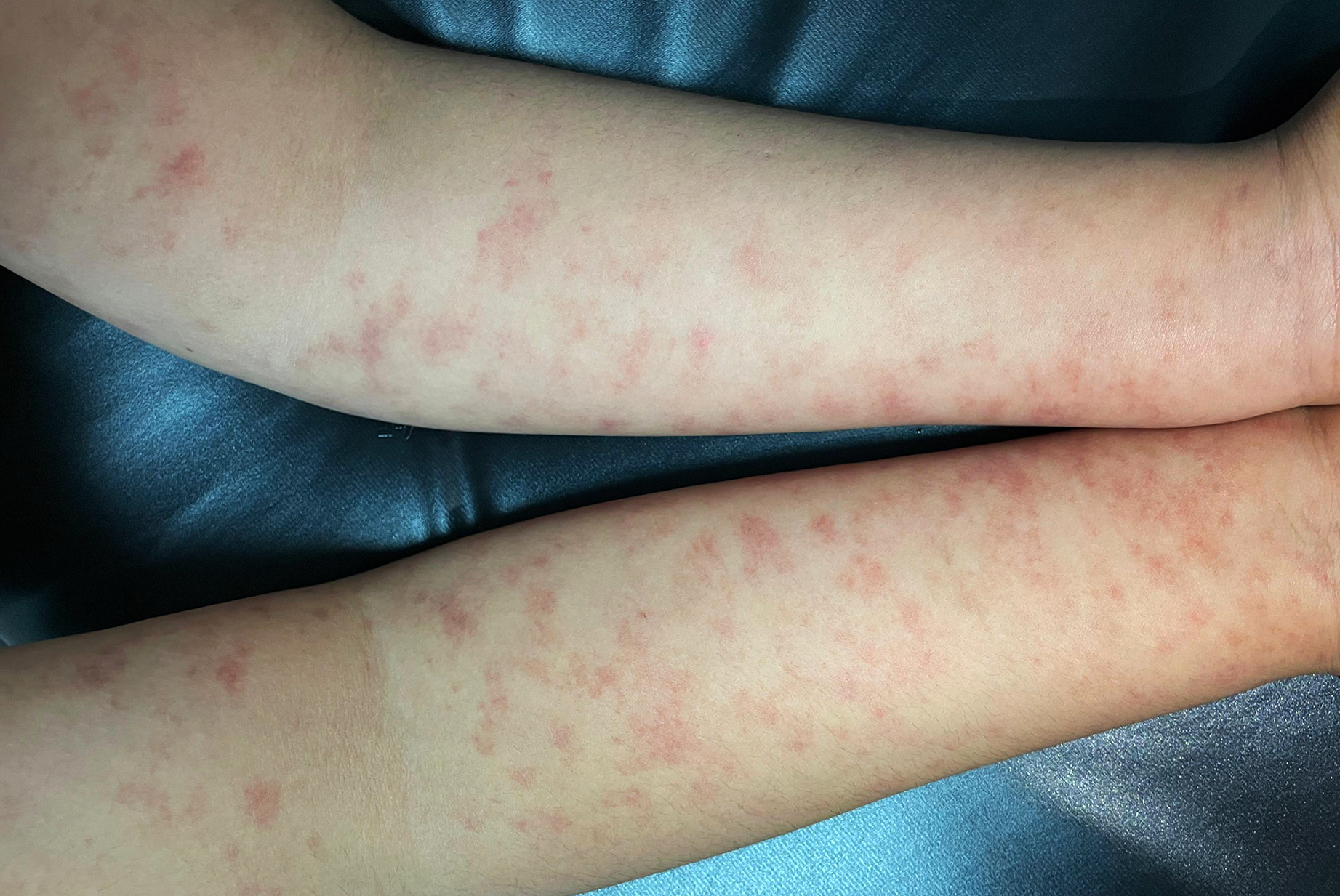Schamberg purpura in an 11-year-old girl.

Downloads
DOI:
https://doi.org/10.26326/2281-9649.35.3.2760How to Cite
Abstract
Background: Schamberg's purpura, also known as progressive pigmented purpura or purpuric capillaritis, is a chronic, benign dermatosis characterized by petechiae and hemosiderin-laden macules. It predominantly affects middle-aged men but is less frequently reported in children.
Case Report: We describe the case of an 11-year-old girl presenting with asymptomatic pigmented macules on the upper and lower limbs, evolving progressively over two years. Clinical examination revealed multiple non-palpable reddish-brown macules, which were non-pruritic and did not blanch under vitropression. Dermoscopy identified dark red dots and globules corresponding to extravasated erythrocytes, along with a diffuse brownish background suggestive of hemosiderin deposition. A complete blood count and coagulation panel were normal, excluding systemic causes of purpura. Histopathological examination confirmed perivascular lymphocytic infiltration, erythrocyte extravasation, and hemosiderin deposition, consistent with Schamberg’s purpura. The patient was treated with oral vitamin C, high-potency topical corticosteroids, and a mucopolysaccharide polysulfate-based gel, leading to complete resolution within six weeks and no recurrence at a two-year follow-up.
Discussion: Schamberg’s disease is the most common form of pigmented purpuric dermatosis, often presenting as cayenne pepper-like petechiae on the lower limbs. While dermoscopic findings frequently include coppery-red pigmentation and a brown network, our case notably lacked the latter. Histopathology revealed characteristic vascular changes, including endothelial swelling, erythrocyte extravasation, and perivascular lymphocytic infiltration. No standardized treatment exists, but topical corticosteroids and vitamin C appear beneficial.
Conclusion: Schamberg’s purpura remains an underrecognized yet distinct entity in pediatric patients. Its clinical, dermoscopic, and histopathological features align with adult cases. While self-limiting, symptomatic cases may benefit from supportive therapies. Further studies are needed to establish standardized management protocols.
